- Home
- William C. Dietz
Red Thunder (Winds of War Book 4) Page 2
Red Thunder (Winds of War Book 4) Read online
Page 2
“But it’s possible that the missiles won’t be sufficient,” Quinn added. “That’s why two Strykers will pass the PUMA on the right, spread out, and open fire with their 30mm autocannons.
“The Nexter will follow and open fire if one of the Strykers is neutralized. Tell your gunners to load AP (armor piercing) rounds interspersed with tracer.
“Now, assuming we kill the tank, the wreckage will continue to block the east entrance to the bridge. And that, gentlemen, is what we want. We don’t have enough resources to successfully engage the forces on the other side of the tank. So, we’ll crouch down, use the T-14 as cover, and wait for the cavalry to arrive. Questions?”
Senior Corporal Caron raised a hesitant hand. The French Foreign legionnaire had a long, deeply lined face. He spoke English with a thick accent. “What’s to stop the Russians from dropping mortar bombs on us?”
“Nothing,” Quinn admitted. “But, if they do, they’ll destroy the bridge. A bridge which they’re going to need once the rain stops. I think they’ll sit back and wait. Anything else?”
“Yeah,” Riley put in. “Why should we do all the heavy lifting? How about calling for a Cobra or an A-10?”
“I did,” Quinn replied. “And the weather wonks told me to fuck off. The ceiling is too low.”
A moment of silence followed. “So,” Atkins said, “what are my blokes supposed to do while everyone else is charging the tank?”
“Guard the west side of the bridge,” Quinn replied. “To make sure the Russians don’t send Spetsnaz (special operators) in to retake the span from the west. Lieutenant Hollis and One-One will stay with you.”
“Okay,” Tyson said. “When is this party going to start?”
“In an hour,” Quinn replied. “Talk to your people. Tell them what to expect, and make sure they understand their roles. That will be all.”
Most of the noncoms left, but Schultz stayed behind. He was a middle-aged man who, according to his record, was a member of the army reserves when the war started. He had a round face and tiny eyes. “May I speak with you, Major?”
“Of course,” Quinn replied. “What’s up?”
“Given the situation,” Schultz said, “I would like to leave my infantrymen behind.”
Quinn knew that a Puma carried a three-person crew plus six soldiers. And Schultz saw no reason to risk his passengers in a head-on confrontation with a main battle tank.
Quinn thought there was something else at work as well. Something she could see in the noncom’s grim expression. The Germans, the French, the Dutch, the Belgians, and the Poles had borne the brunt of the Russian neozhidannaya ataka (surprise attack), and lost hundreds of thousands of soldiers and civilians during the months that followed. Did Schultz think he was about to die?
“Of course,” Quinn said. “I should have considered that. Your men can remain at the west end of the bridge. Then, if we need them, we’ll call them forward.”
“Vielen Dank (Thanks). You can count on us.” And with that Schultz left.
Quinn closed her eyes. Would the plan work? People would die even if it did. And she might be one of them. And why not? Quinn asked herself. She couldn’t think of an answer.
The next hour passed quickly … And concluded with a good deal of lights-off maneuvering as radios crackled and vehicles were guided into position. Finally, after what seemed like an eternity, Task Force Romeo was ready to attack. And, it was apparent from the flares that lit the cloud bottoms, the enemy knew something was afoot.
That was to be expected of course, since it was quite likely that the combined engine noise, generated by the Allied fighting vehicles, could be heard on the other side of the river. Not to mention the fact that the Russians might have drones with thermal imaging cameras circling overhead. But even if that was the case, the enemy wasn’t likely to anticipate an attack on the T-14 tank. Or so Quinn hoped.
Quinn had decided to ride in One-Three, aka the Widow Maker, which had been slotted into the two-hole behind the Puma. Unlike the Strykers the German machine was a tracked vehicle and slower because of that. But, according to Schultz, his fighting machine could do 40 mph on a highway. And that was fast enough for the mission at hand.
Once all the trucks were in position, and the radio checks had been completed, Quinn provided a count down. “Five, four, three, two, one, go!”
The Puma went. The Strykers followed. And Quinn was surprised by the way the ponton was shaking, rolling side-to-side, and pitching forward and back. It screeched too … Like a beast in pain.
Quinn was wearing night vision gear as she stood in the air guard hatch. The Puma was straddling both lanes and making about 30 mph. The midpoint was still ahead and that gave Quinn a moment to think.
The Russians knew enemy vehicles were on the way. What kind of man was in command of the T-14 anyway? The kind who kept a 125 mm shell up the spout? Or the kind that considered that to be a safety hazard? In the second case his gunner would have to load a round. That wouldn’t take long, but every second was precious.
Schultz’s voice interrupted her thoughts. “Missile fired. Missile fired. Over.”
Thanks to a lesson from Schultz, Quinn knew that the Spike missiles would go high, and dive onto their target. That would allow the weapons to hit the T-14 where its steel skin was the thinnest and neutralize the tank’s reactive armor.
And, because the Spikes could be launched in the fire-and-forget mode, there was no need to keep eyes-on during flight. That’s what Quinn was thinking when the T-14 fired. The tank’s thermal sight was spot on. The 125mm high explosive shell struck the spot where the Puma’s low-profile turret met the front deck and exploded.
The turret rode upwards on a pillar of fire, and seemed to hang there for a moment, before plunging back down. Would it sever the bridge? You should have considered that possibility earlier, Quinn told herself.
One-Two took the lead, veered around the burning wreckage, and opened fire. Two-Three followed. And that was when Quinn witnessed two nearly simultaneous explosions. Each missile was equipped with a charge-coupled device (CCD) plus an imaging infrared (IIR) seeker. The Russian tank had been easy to find. And the 125mm cannon had fallen silent. Flames were visible for a moment then disappeared.
The Strykers were rolling side-by-side firing AP tracer rounds. “Cease fire and conserve ammo,” Quinn ordered. “Use the tank for cover. If you can find a way to fire over or around the wreck do so. But don’t engage unless forced to.”
The Russians were firing by then, but ineffectually, since they didn’t want to destroy the bridge. Quinn went below as soldiers poured out through the Stryker’s rear hatch and took up defensive positions. The Russians might be shy about using mortars, but they could sure as hell send troops in, and Quinn figured they would.
The Stryker’s 50 watt long-range/short range radio was fully capable of reaching EUCOM (the United States European Command). EUCOM had originally been located in Stuttgart but was forced to relocate to the recently reactivated Metz-Frescaty air base in France.
After being put on hold for five minutes, Quinn finally got to speak with her CO, a brigadier general with a southern accent, whom she’d never met face-to-face. His name was Wallace Neely, and he listened patiently while Quinn made her report. “So, you have it,” Neely said. “Over.”
“That’s affirmative,” Quinn replied. “But it’s under great pressure from the river, and the enemy is only 100 yards away. Over.”
“Roger, that,” Neely replied. “All you have to do is hold for 12 hours. Help is on the way. And if the weather clears, we’ll provide air cover. We need that bridge. Don’t let us down. Over.”
Twelve hours sounded like an eternity. But all Quinn could do was acknowledge her orders and sign off. Probing attacks followed. Snipers sought to inflict casualties. Insults were shouted through a megaphone. And, as if siding with the Russians, the bridge continued to heave and screech.
Then, at precisely 0300 in the morning, the Russian soldi
ers attacked. They couldn’t flank the Allied troops. So, they had to approach the bridge directly. That was a brave though foolish thing to do. One-Two was positioned behind, and slightly to the left of the burned-out tank.
One-Three was on the opposite side of the bridge, with half its hull protected, and its 30mm cannon exposed. Both vics fired three-round bursts. And that, combined with steady fire from their machineguns and grenade launchers, cut the attackers to shreds.
The assault lasted for less than a minute, and left Quinn feeling hopeful. Maybe, just maybe, Task Force Romeo could hold out long enough for help to arrive.
The sun was obscured by clouds, and daylight seemed to creep in from the east, as the rain continued to fall. The soldiers were rotated through the fighting vehicles every hour to warm up and sip a hot drink. But the rest of their time was spent standing guard and trading shots with the Russians.
Meanwhile the already swollen river was testing the bridge’s strength. It continued to buck and heave as waves broke over the span’s upstream side and sluiced across the deck to rejoin the river on the north side.
Ropes had been rigged to keep soldiers from being washed overboard. And, had Quinn been able to, she would have ordered a retreat to the west side of the span. But to do that would expose her tiny command to Russian fire and the gyrations of the bridge. So, all Quinn and the others could do was endure.
But that came to an end shortly after 1000, when a link between two of the pontoons gave way under the river’s relentless pressure, and the bridge broke in two. The break was only a hundred yards from where Quinn was standing.
She made a grab for One-Two’s passenger side mirror and held on, as soldiers shouted warnings, and the raging current pushed the longest section of the bridge west—and over to the shoreline. As the span swiveled it took the Puma and three bodies with it.
Quinn remembered the look on Schultz’s face, the courage with which he and his two-man crew had attacked the tank, and felt a lump form in her throat. All dead. And for nothing.
But most of Quinn’s soldiers were still alive. And, as the river shoved the short section of the span over toward the east bank, Task Force Romeo came under enemy fire.
The reverse was true as well. Quinn began to shout orders into her mike. “This is Echo-Six … Put every weapon that can be brought to bear onto the enemy and fire! Alpha-Four … Take three men and see if you can free our section from the others. Over.”
The concept was simple: Free the 50-foot-long section they were on, allow it to be carried down river, and try to get ashore without losing additional lives.
But to do that they would have to keep the Russians at bay. A large caliber automatic weapon was targeting One-Two. Bullets clanged on armor, buzzed past, and sprayed the river.
“Kill that machinegun!” Quinn ordered, and felt a sense of satisfaction as two streams of 30mm rounds converged on the enemy position and destroyed it.
***
Sergeant Rick Tyson and his men were entirely exposed as they crossed water slicked metal to access the gap between the section they were standing on and the one upstream. A double threat confronted the Americans as Russian snipers tried to zero in on them, and the river threatened to overwhelm the pontoon barges that were sideways to the current, rather than pointing upstream as they should have.
Chains connected each section of the span with the next, and were equipped with heavy-duty tensioners, four per joint. Tyson figured it would be relatively easy to pull each tensioner handle up, release the chain it was connected to, and free the attached hook. But he was wrong.
The constant heaving of the bridge deck combined with the erratic side-to-side motion caused by the current meant that the slack came and went. That made it necessary to wait, watch, and pull the hook free at exactly the right moment.
It was difficult to hear over the roar of the river, the thump-thump-thump of the 30mm autocannons, and the rattle of machinegun fire. A mortar round fell on a section upstream from Tyson and produced a loud boom. Shrapnel flew in every direction and Tyson swore as Cassidy went down.
Then some momentary slack appeared, the hook came free, and it was time to move inboard. Brody was a few yards away working on his second chain. Two down and two to go. “Alpha-Four to Echo-Six … Get ready. There are two chains left to release. And, once they go, we go. Over.”
***
Quinn was firing her M4 carbine over the front left fender of the T-14 tank, when she heard Tyson’s report. A Russian ran straight at her firing as he came. Quinn assumed he was wearing armor and aimed low. The three round burst hit the soldier ankle-high, shattered his right tibia, and dumped him on the ground. He fell and began to scream.
“This is Echo-Six,” Quinn said. “All personnel will exit the vics. Toss Willie Pete (white phosphorous) grenades into the Strykers. Pull back to the Nexter. Three-One will prepare to fire on the east bank as we float downstream. Execute. Over.”
Quinn turned, saw that one of the Legionnaires was down, and went to grab the soldier’s harness. With help from an American PFC she towed the casualty back to the Nexter where Caron’s men took over.
“We’re outta here!” Tyson shouted over the radio. “Over.”
Quinn felt a sudden jerk, and nearly lost her balance as that section of the ponton, along with five barge-like pontoons broke free and began to spin. Caron’s gunner struggled to keep the Nexter’s 25x137mm dual feed cannon on target as the raft turned lazy circles.
The incoming fire started to slacken, while what remained of Task Force Romeo drifted out of range. “Cease fire, Three-One,” Quinn ordered.
She turned to Tyson. “The barges have engines, right? Take some men and try to start them. Maybe we can use them to steer. I don’t know about you, but I want to land on the west bank, not the east bank.”
“Copy that,” Tyson said. Then he was gone. Quinn stood with legs braced, as the unwieldy platform raced past the town of Rheindurkheim. How far would the river take them? All the way to the North Sea? Or would it deposit them on a riverbank?
An engine coughed, then coughed again, and rumbled into life. Quinn went over to observe. A stream of blue-black smoke issued from a short stack as the diesel chattered. That was when Quinn spotted the tiller in the stern, and realized that it was connected to an oversized rudder. Did all the barges have rudders? Yes, they did.
A second engine started as Quinn sent men to push each tiller over, thereby turning the ponton to the left, and causing the platform to angle in. The other three engines refused to start. Fortunately, the forward thrust provided by two propellers, combined with the leverage produced by five rudders, was sufficient to get the job done.
But how to stop the waterborne behemoth? The river was up and over its banks in places which meant there were no beaches. Quinn turned her attention downstream. Verdant farmland crowded the river. Barely visible through the rain was a place where the river had risen to capture some trees.
If they could drive the platform in between the trees, and a rising embankment, the raft would escape the current. “Eyes left,” Quinn said. “See the trees? Aim for the spot to the right of them. Coordinate your steering with the people to the right and left of you. That’s right, stay on course, we’re almost there.”
Then came the dangerous moment when it looked as if the platform was going to miss the gap and continue downriver. But, thanks to the eddy created by the point of land just south of them, the ponton surged toward the riverbank, and ran aground. Would it remain there?
“Go ashore!” Quinn ordered. “Run the Nexter off the platform!”
Fortunately, the French machine was designed to handle difficult fords. It landed with a splash. Water flew as the 8 X 8 fought for traction, found it, and waddled up onto a fallow field.
A Stryker and two British Warrior Fighting Vehicles arrived minutes later. Second Lieutenant Tom Hollis jumped down off the vic called “Bambi,” and hurried forward. “We could hear your radio transmissions,” Hollis
volunteered. “It’s too bad about the bridge, but hey, we took a shot.”
Sergeant Riley grinned. Quinn forced a smile. “Yeah, we took a shot.”
CHAPTER TWO
The Deeps, the Netherlands
World War III began when the Chinese attacked the
Zumwalt Class Destroyer, USS Stacy Heath, in the South China Sea and, after a hard-fought battle, managed to sink it.
Russia joined the conflict two days later when it destroyed NATO headquarters in Brussels. The low-yield tactical nuke was hidden in a backpack and detonated by a Russian sleeper agent. It killed thousands of people and left a lake-sized crater in the middle of Brussels.
The strike was intended to kill the two-dozen high ranking officers scheduled to meet in the complex that day, and thereby decapitate NATO’s command and control (C2) structure, prior to the air-ground attack that would follow minutes later.
But, in the wake of the attack on the Stacy Heath, there had been a change of plans. And rather than meet in Brussels, the military officers and their staffs had been sent to a top-secret base near Gelderland, in the Netherlands. The blast proof facility was located at the bottom of an old coal mine and was equipped to function as a backup C2 center for NATO.
And that was where CIA Paramilitary Operations Officer (PMOO) Daniel Dean was headed. The first stop was a modernistic government-run biomedical research facility. The facility not only studied exotic diseases like COVID-19, but served as a gateway to the so-called “Deeps.” NATO’s Strategic Level Command (SHAPE) was located there and had responsibility for planning and executing all of NATO’s military operations, including those classified as “clandestine.”

 Halo: The Flood
Halo: The Flood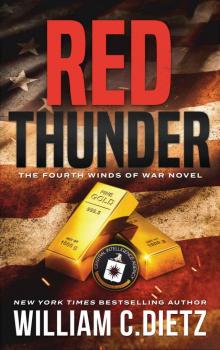 Red Thunder (Winds of War Book 4)
Red Thunder (Winds of War Book 4)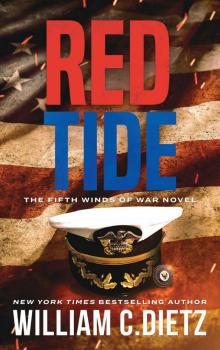 Red Tide
Red Tide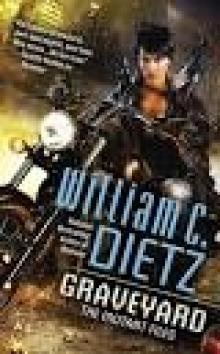 Graveyard
Graveyard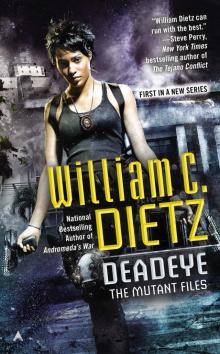 Deadeye
Deadeye Resistance: The Gathering Storm r-1
Resistance: The Gathering Storm r-1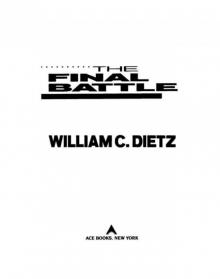 Legion Of The Damned - 02 - The Final Battle
Legion Of The Damned - 02 - The Final Battle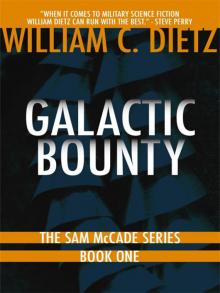 Galactic Bounty
Galactic Bounty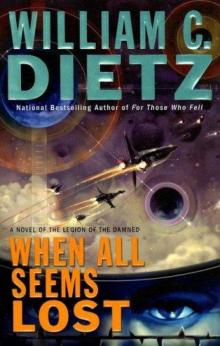 When All Seems Lost
When All Seems Lost Red Flood (Winds of War Book 2)
Red Flood (Winds of War Book 2)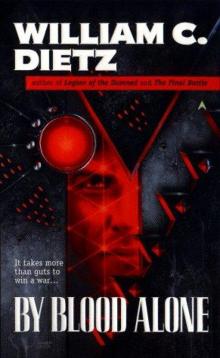 By Blood Alone
By Blood Alone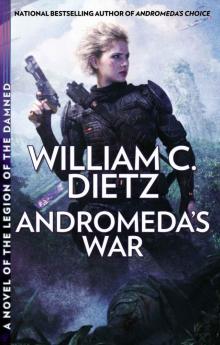 Andromeda's War (Legion of the Damned Book 3)
Andromeda's War (Legion of the Damned Book 3)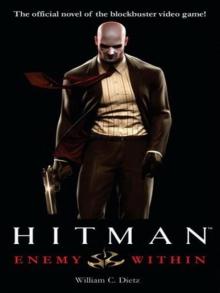 Hitman: Enemy Within
Hitman: Enemy Within Bodyguard
Bodyguard EarthRise
EarthRise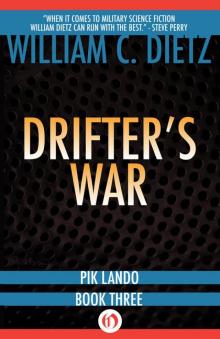 Drifter's War
Drifter's War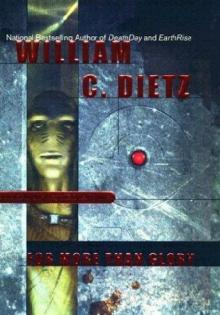 For More Than Glory
For More Than Glory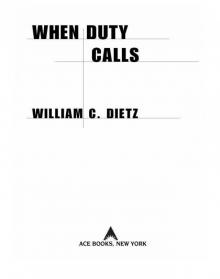 When Duty Calls
When Duty Calls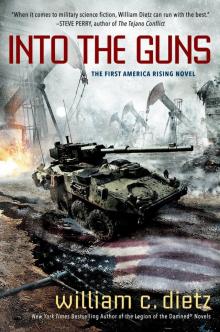 Into the Guns
Into the Guns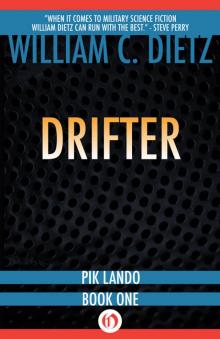 Drifter
Drifter Ejecta
Ejecta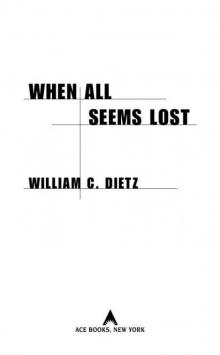 When All Seems Los lotd-7
When All Seems Los lotd-7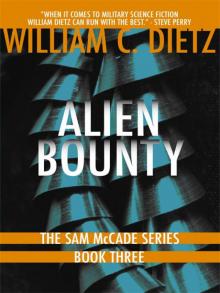 Alien Bounty
Alien Bounty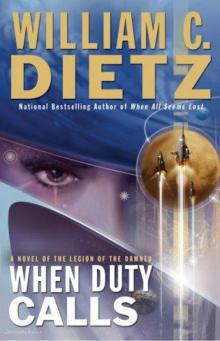 When Duty Calls lotd-8
When Duty Calls lotd-8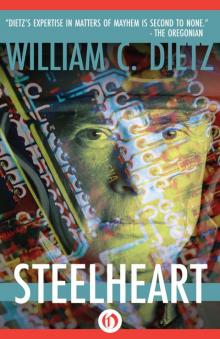 Steelheart
Steelheart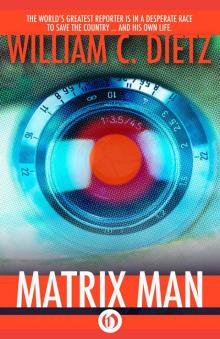 Matrix Man
Matrix Man Legion of the Damned
Legion of the Damned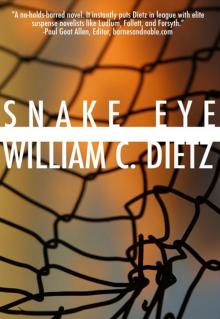 Snake Eye
Snake Eye Logos Run
Logos Run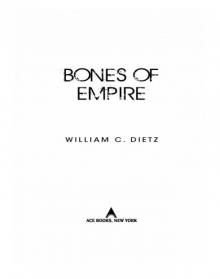 Bones of Empire
Bones of Empire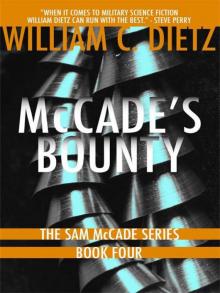 McCade's Bounty
McCade's Bounty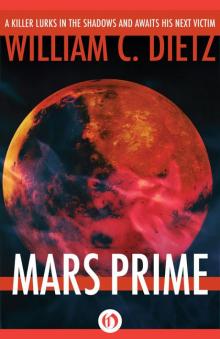 Mars Prime
Mars Prime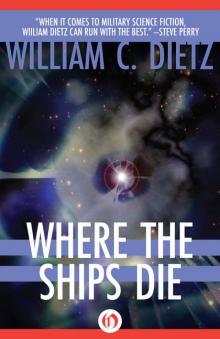 Where the Ships Die
Where the Ships Die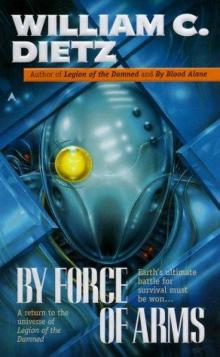 By force of arms lotd-4
By force of arms lotd-4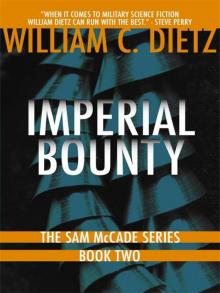 Imperial Bounty
Imperial Bounty Legion Of The Damned - 01 - Legion of the Damned
Legion Of The Damned - 01 - Legion of the Damned Hitman: Enemy Within h-1
Hitman: Enemy Within h-1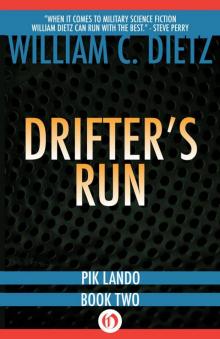 Drifter's Run
Drifter's Run A Fighting Chance
A Fighting Chance McCade on the Run (Sam McCade Omnibus)
McCade on the Run (Sam McCade Omnibus)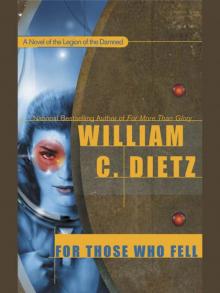 Legion Of The Damned - 06 - For Those Who Fell
Legion Of The Damned - 06 - For Those Who Fell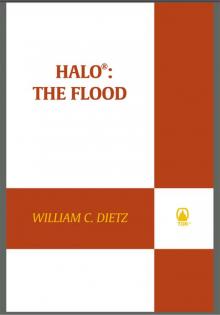 Halo. Flood
Halo. Flood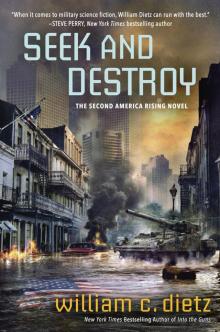 Seek and Destroy
Seek and Destroy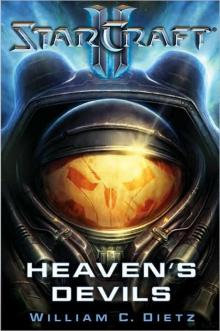 Heaven's Devils si-1
Heaven's Devils si-1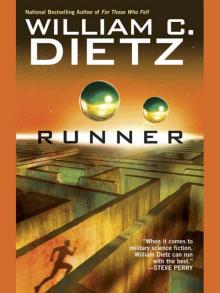 Runner
Runner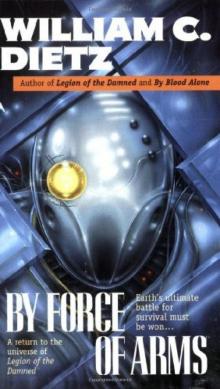 By Force of Arms
By Force of Arms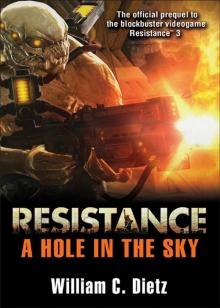 A Hole in the Sky
A Hole in the Sky The Seeds of Man
The Seeds of Man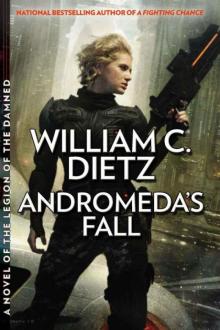 Andromeda's Fall
Andromeda's Fall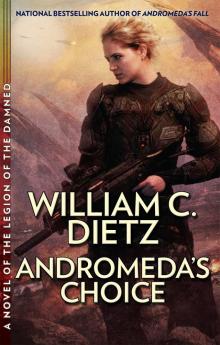 Andromeda’s Choice
Andromeda’s Choice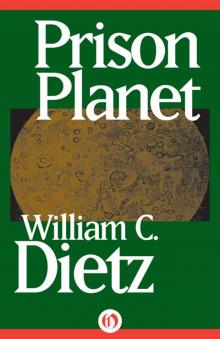 Prison Planet
Prison Planet Heaven’s Devils
Heaven’s Devils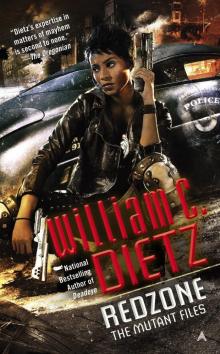 Redzone
Redzone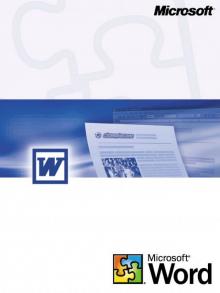 Jedi Knight
Jedi Knight